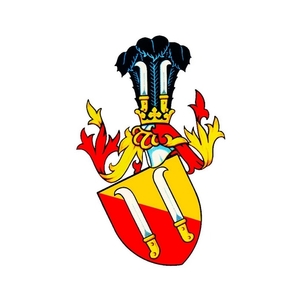House of Dietrichstein
At the time of the revolt, Helfštýn was apparently guarded by a garrison because some local aristocrats stored their valuables there, but war by-passed the castle. In October 1621, during the incursion of Johann Georg of Krnov to Moravia, insurgent Wallachians led by Jan Adam of Víckov came to Helfštýn and Lipník and the imperial garrison surrendered the castle without a fight.
The Wallachians stayed at Helfštýn until January 1622 and plundered the castle substantially. Following their departure, imperial soldiers returned to the castle and handed it over to the new owner, Bishop Franz von Dietrichstein, in June 1622. The citizens of Lipník, the vast majority of whom were Protestants, as well as subjects in villages in the Helfštýn domain could not have had a worse overlord. Franz von Dietrichstein, acting as the head of the Catholics before and after the revolt, was infamous for his ruthless enforcing of the counter-reformation and greedy exploitation of his subjects. Already in July 1622, he sent Johann Drachovius, a Jesuit, to the Helfštýn and Hranice domains, ordering him to set the stage for counter-reformation, and officials at Helfštýn were almost as relentless towards their subjects. When the Danish army led by General Mansfeld came to Moravia in the autumn of 1626, a rebellion against the hated overlords broke out all over the Helfštýn domain, as Franz von Dietrichstein had to admit. Mansfeld never conquered the castle, but when the danger had passed, Franz von Dietrichstein moved the domain administration from Helfštýn to Lipník, and soon after that, the Helfštýn domain began to be called the Lipník domain. War events caused immense damage to the inhabitants of the domain, and Helfštýn, once a prosperous estate, was declared desolate in the resolution of the Moravian Council of 1643.
The imperial garrison remained at Helfštýn until the end of the Thirty Years’ War.
It was somewhat paradoxical that one of the garrison’s commanders was Stephen of Bruntál & Vrbno, younger brother of George of Bruntál & Vrbno, who converted to Catholicism. In 1643, this imperial officer succeeded in protecting the castle during the siege by the Swedish army, led by General Torstensson, but neither did the Swedes conquer Helfštýn the second time round in 1645. The late-Gothic fortress proved to be an exception work of military defence one and a half centuries later under modified conditions of warfare. When the war ended, Dietrichstein overlords had little to no interest in further maintenance of the unprofitable military structure, but did not agree to the plan of the territorial government to demolish Helfštýn to prevent using the castle by enemies in case of a sudden war. In 1656, relatively extensive demolition was carried out, which did not much affect Helfštýn’s fortification, but definitely stripped it of the character of a manor house. And this was the beginning of the long-term destruction of the castle.
During the Turkish offensive of 1663 and later during Thököly’s uprising in Hungary in 1680, the castle was once again populated with an imperial garrison whose commanders ordered at least temporary repairs of the fortification. At that time, simple fortifications – a refuge for villagers with their meagre possessions – were constructed at the forecourt. Thorough conversion of the castle into a modern fortress was contemplated by the government authorities during the Prussian wars in mid-18th century, but only minor construction works were performed, and Helfštýn was excluded from the territorial defence system after the Seven Years’ War. The castle was falling into disrepair and its doom was accelerated by demolition works ordered by the House of Dietrichstein in the late 18th century. These attempts culminated in 1817 when artillery fire damaged part of the inner castle.
